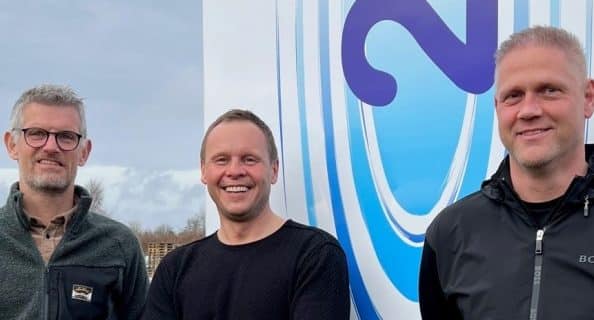Digital transformation is a necessity in the water sector. Many industry players are riding the digital wave. But we are not there yet if the industry is to meet increasing demands for digitalization. Utility data needs to be made more accessible and silos need to be broken down within the organization – something the use of a data platform can support.
Better and more data-driven decisions
The water sector is going one way, and that is towards more digitalization. Digital transformation is, among other things, about being able to make better decisions based on data across silos and data sources. Data is essential. This applies both to the collection and storage of data, as well as to ensuring access to the insights it can provide.
One way to make optimal use of data is to bring data together in one platform. According to David Getreuer Jensen, Head of Data Science and Digital Innovation at Envidan, a data platform can facilitate better and more data-driven decision-making, which is a necessity for efficiency and proper investment.
A data platform is a place where all data is gathered. And here “all data” should be underlined. Also the data from SRO systems at wastewater treatment plants, pipeline registration, plant registers, documents and third party data from e.g. the European Commission. DMI and EnergiNet. In the data platform it is possible to work with data, automate processes, visualize and integrate them.
“The platform can be used to improve workflows, visualizations and to build models, which is something the water sector is justifiably expected to be able to do.”
A helping hand for a busy industry
Large amounts of data have been collected in the water sector for many years. However, these data are not systematized and are very difficult or impossible to understand. Using this data requires water and digital expertise. Envidan’s industrial PhD however, shows that the water sector lacks internal resources and digital skills, and that unused data is piling up across organizations.
Many organizations face the challenge of having a very silo-based structure when it comes to data and data sharing. In the finance department they may have one system and in the IT department a completely different one, which they may even have “built” specifically for them. When you use proprietary systems or build and program something yourself, you end up with closed systems – so-called silos. The systems can only do what they are supposed to do and data is locked to that use. They are therefore not agile.
“We need to set data free, and we do that with a common platform.”
Data on demand
In a data platform, data is collected, and thus the professional and technical knowledge of employees can be secured in reports, machine learning models for predicting pipe conditions, quality assurance of data and localization of extraneous water and to work purposefully with asset management in the organization. If you have all data and data sources available, you can use data across the board and create value that would otherwise not be possible.
“Organizations no longer need to work in multiple data-driven systems – they need to bring data together and achieve synergies and increased efficiency. We have experienced this ourselves at Envidan when we implemented the data platform, which we can now offer to the entire utility industry.”
David Getreuer Jensen, Head of Data Science and Digital Innovation’
Want to know more about the data platform?




